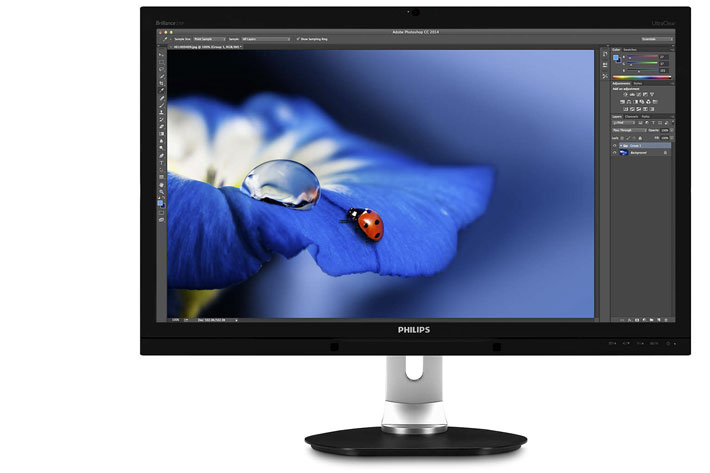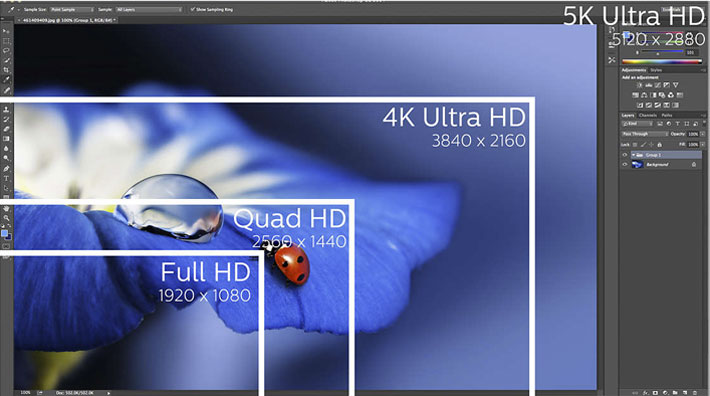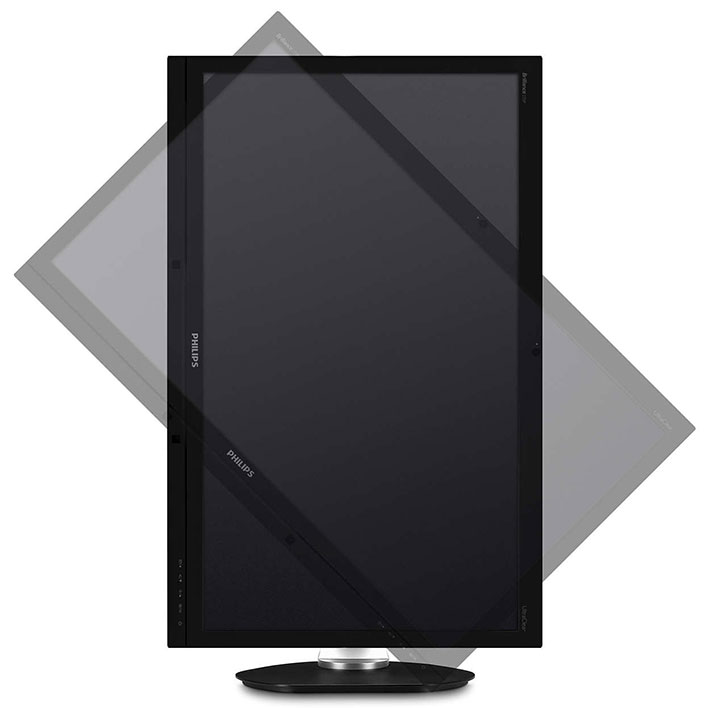
Announced last year, but only available this April, the Philips 275P4VYKEB display doesn’t reveal its 5K ambitions until we see it working. This 27 inch monitor has a low-key design and is similar to normal Philips monitors. Until it’s on and you get 14.7 million pixels, from a 5120 x 2880 resolution.
It may well be only a 27 inch model, but in terms of working space, it is a big monitor. It packs four times as many pixels as Quad HD, and over 50 percent more than Ultra HD, delivering ultra-fine clarity and sharpness to amaze and delight even seasoned graphics professionals. The 4K generation of monitors is not yet something you see everywhere, and a 5K is even less seen – Dell and Apple have them too – but the market surely goes in that direction: more and more resolution on monitors.
Buying a 5K may seem a luxury, but in fact, if the monitor has more to offer than resolution, it is a sound investment. And exciting in terms of what you can do with so much space. I remember when I had my first 30 inch 2560×1600, in 2007. Everybody thought it was too much… until they saw how I could open photographs on that screen. When it died, some three years ago, I could not go back to a smaller size, even a 27 inch I tried seemed small, so I bought a 30 inch Dell which is my working monitor these days.

Once you get used to the extra space offered, there is no way to go back. A 5K resolution packs an extra 1000 horizontal and 700 vertical pixels of display area compared to a 4k monitor, creating additional space to help busy users work more productively and effectively – there is space for an extra CAD tool window, for example, for comparing a series of photos or professional graphics, or simply to keep a mail window open. If you’re editing video, you can open a 4K UHD video and still have space around for tools.
Having a monitor with so much resolution makes a second screen superfluous for many tasks, which helps to increase efficiency as well, as users can keep their eyes on one screen. With advanced PLS technology, the Philips display also features extra-wide viewing angles of 178 degrees, ensuring viewing accuracy with razor-sharp visuals from just about any angle. One aspect to remember is that, even if you do not use it for games (and you would need a very good graphic card, better make it two, and powerful computer), to explore the full resolution you need to have a graphics card able too deal with the resolution. Check it first if you want to have a 5K monitor at home.

It’s not just a matter of resolution, though. Professionals who choose a display with super-fine resolution are likely to be equally demanding about colour accuracy. Inconsistent colour is simply out of the question. With PerfectKolor, the new 5K display provides factory-calibrated colour with 99% Adobe RGB and 100% sRGB consistency – so users can be completely confident that every colour exactly matches requirements. The colour is not only accurate; it is also smooth and sumptuous. With 10-bit colour support, the new display offers, according to Philips, rich colour depth, and can represent over one billion different colours – more than the eye could ever distinguish. Thanks to 12-bit internal processing, colours are re-created smoothly and naturally, without gradations or the nuisance of banding effects.
Albert Ulfman, Product Manager Philips Monitors Europe at MMD, the technology company and brand license partner for Philips Monitors, says: “With the 5K resolution, we ensure that professional users can enjoy a superior-quality display with long-term reliability that can measure up to the challenges of graphics and engineering applications. 5K Ultra HD shows every minor detail, sharp and clear.”
As well as offering brilliant, accurate colour and 5K resolution, the display is engineered with a range of features to fit the way professional users work, with webcam and microphone for collaborating and sharing with colleagues and clients, plus built-in speakers for lifelike sound reproduction. The Flicker-free technology keeps the eyes fresh even after hours of detailed work, and the SmartErgoBase, which can be tilted, swivelled and height-adjusted to individual preferences, ensures maximum viewing comfort. It also keeps cables tidied away, freeing more space on the desktop.
To connect efficiently with data sources – vital for the data-intensive graphics applications common in professional environments – the new display also supports USB 3.0, with a transfer rate of 5 gbits/s, 10 times the speed of USB 2.0. It also allows fast-charging of a device simultaneously with the super-speed data transfer.
The new Philips 275P4VYKEB display has a suggested price of € 1599. No price announced for the United States yet, but if the Philips follows the prices of the Dell monitor, expect to pay somewhere close to $ 2000.

